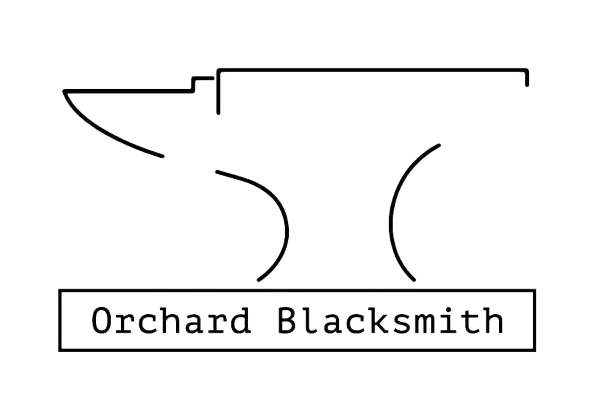Drawing Out vs. Spreading Steel: What’s the Difference?
At first glance, blacksmithing can look like nothing more than hitting hot steel until it behaves. But once you spend some time at the anvil, you realize that every hammer blow serves a purpose — and how you strike determines the way metal moves. Two of the most important techniques you’ll encounter are drawing out and spreading.
Both involve reshaping steel, and both can make your stock longer or wider. But the direction of movement is what sets them apart. Understanding this difference is key to developing control and precision in your work.
What Is Drawing Out?
Drawing out is the technique used to make a bar longer and thinner. The hammer blows are aimed across the width of the stock, pushing the metal forward along its length. In the process, the piece gets narrower and extends outward, almost like pulling taffy or rolling dough into a rope.
You’ll use drawing out when forging tapers for hooks, chisels, or punches, when you want to lengthen a short bar into something more usable, or when shaping blade profiles that need extra length. Tools like the cross-peen hammer or fuller tools make the process more efficient, helping direct the steel in the direction you want it to move.
What Is Spreading?
Spreading, on the other hand, is about making steel wider rather than longer. Instead of stretching forward, the hammer strikes are aimed along the length of the bar, which encourages the metal to expand sideways. The result is a piece that flattens and grows outward, while its length stays mostly the same.
This technique is especially useful for forging leaves, decorative elements, axe blades, chisels, or anywhere you want width without unnecessary length. A flat-faced hammer works well here, giving you more surface contact and even distribution of force. Sometimes smiths use swage blocks or flat dies to help keep the piece balanced while it spreads.
Tips for Success
Think About Direction: Decide whether your project needs length or width before you start hammering. Drawing out and spreading can work against each other if you’re not intentional.
Use the Right Tools: Cross-peens and fullers help push steel lengthwise, while flat hammers are better for distributing blows sideways.
Mind Your Heat: Both techniques work best at bright orange or yellow heats. If the steel gets too cool, you risk cracks or ugly folds.
Work in Stages: Don’t try to finish in one go. Multiple heats and controlled strikes will always give you cleaner results.
Final Thoughts
Though drawing out and spreading may seem similar at first, they’re really two different “languages” of hammer control. Drawing out stretches steel into something longer and slimmer, while spreading flattens it into something broader. Together, they give you the power to shape metal with intention rather than chance.
If you would like to discuss a potential project, please do not hesitate to contact us.
